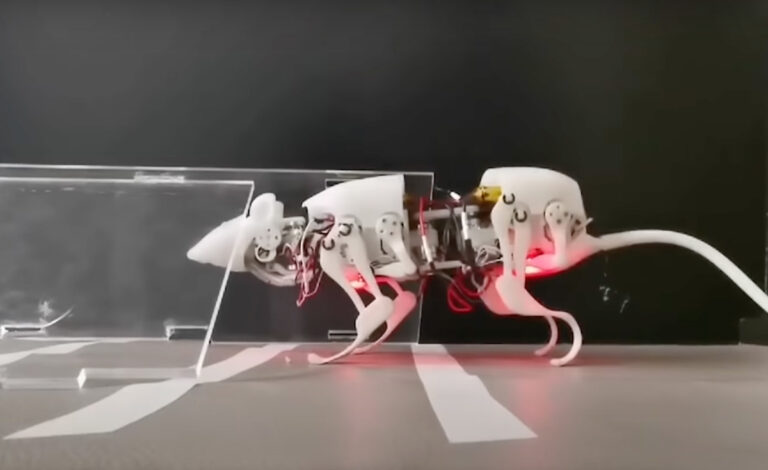This new robot rat invention could one day save your life
A team of researchers from the Beijing Institute of Technology (BIT) and Tsinghua University said they have developed a robot rat that they hope can be used in post-disaster rescue missions. In the findings published in the peer-reviewed journal IEEE Transactions on Robotics this month, they revealed that the mechanical rodent can squeeze through narrow spaces, climb slopes, get over obstacles and even walk on snow, adding that it could be used to carry medical supplies or emergency rations to places rescuers cannot access—take hard-to-reach incidents like people trapped under rubble after an earthquake.
According to the South China Morning Post, lead author Shi Qing, a professor and the vice-director of the intelligent robotics institute at the BIT, said the team has been upgrading the prototype since 2019 and hopes to get the robot ready for market launch as early as 2025.
“The robotic rat can be sent to earthquake ruins or building collapse scenes where debris forms spaces that are too narrow for rescuers to enter. It can deliver emergency rations to people trapped under rubble,” Qing said. “It can also navigate complex underground pipeline networks, a key part of smart city development. A larger inspection robot can carry the robotic rat into the network, where it can be deployed to go into smaller pipes for detection tasks,” he continued.
By imitating the motion of actual rats, the robot can stand from a crouching position or stay low to the ground, crawling in spaces with low ceiling height. It can also efficiently turn in curved narrow passages and recover from falls by controlling its limbs and cervical spine to adjust its centre of mass, allowing it to work on rugged terrains, the paper said.
To implement such ability and ease of movement in the mechanical technology, the team used X-ray recordings to observe the skeletal structure of rats and build the robot, which can be assembled with 3D-printed parts in about one week.
The head and body of the robot rat are made of photosensitive resin, while high-strength nylon forms its four limbs to ensure strength and rigidity. It also has a tail made of soft rubber that can move up and down to maintain balance when it moves.
Measuring 19 centimetres (7.5 inches) in length and weighing 220 grams (7.8 ounces), the robot is powered by solar rechargeable batteries that can last 30 minutes and be controlled remotely via wifi using a computer or phone.
According to Qing, it walks at an average speed of 15 centimetres per second and has a 200-gram payload for sensor installation or transporting light goods. The team added that they will continue to upgrade the robot, including improving its agility, installing more sensors for field tests in narrow unstructured pipelines and waterproofing the machine body.






